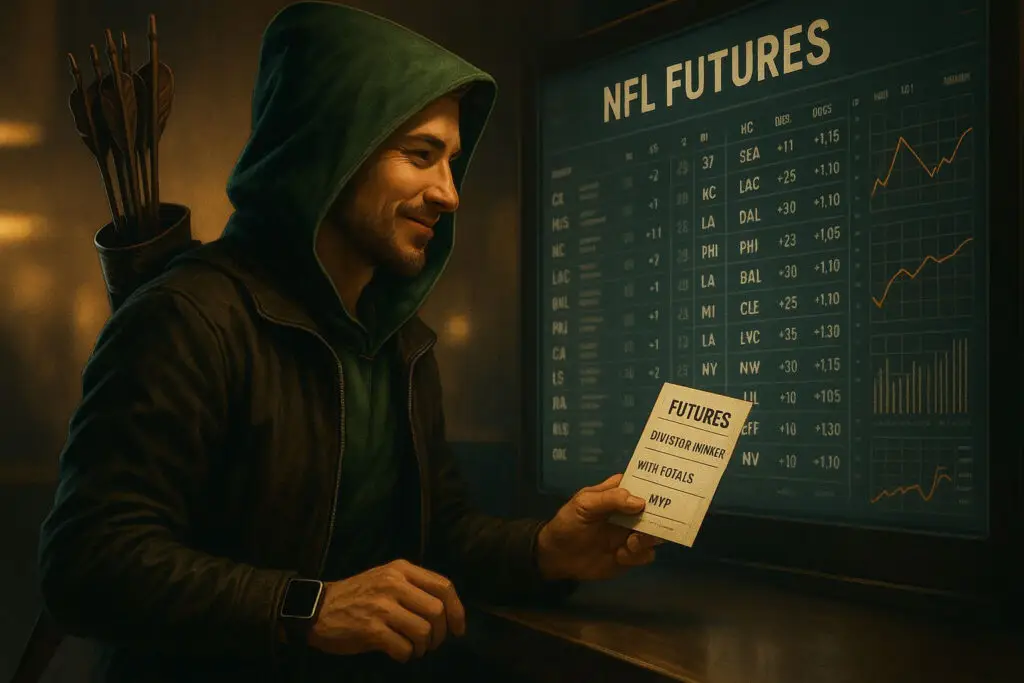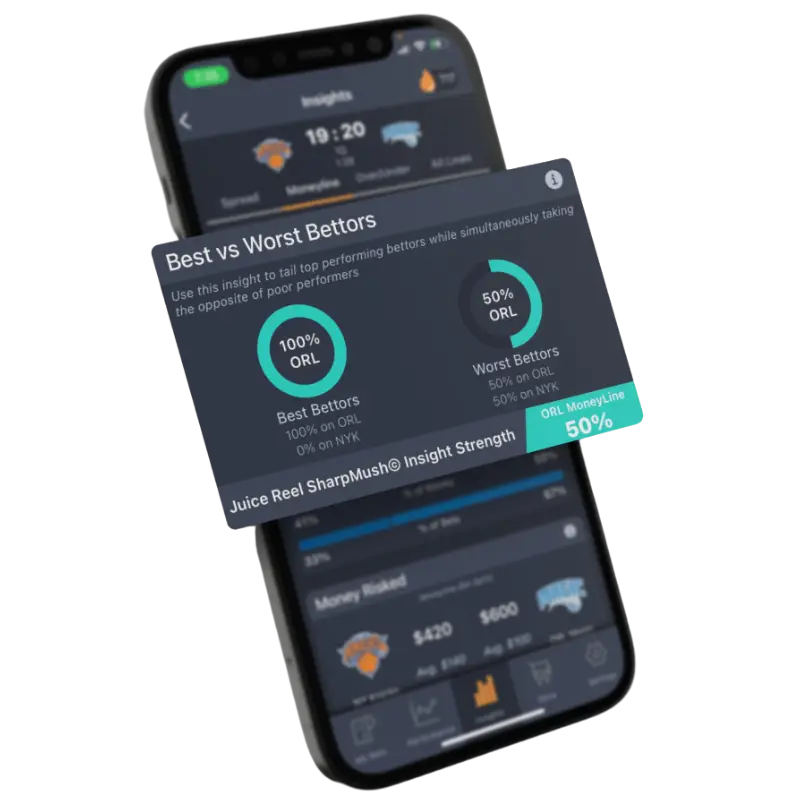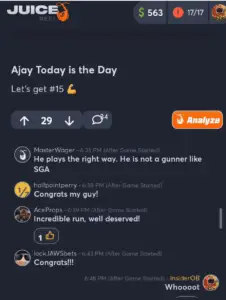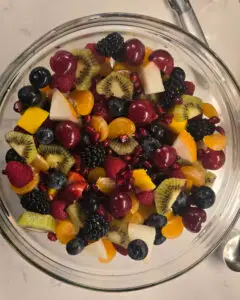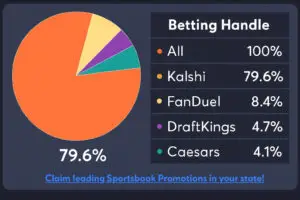Table of Contents
I love NFL futures because a small portfolio of 15-20 bets can make the season more fun for more than five months (!!).
An assembly of futures bets is easy to share with friends (I’ve been running a group “futures cabal” for a few seasons running), and in today’s market you can often find prices with little or no house edge, boosting your bottom line.
So this week I’ll delve into my approach to researching and getting down on football futures.

Micah Parsons is worth at least one win!
Today we’ll cover: why futures are such a good betting opportunity, how to identify house edge in futures markets and why it matters, which markets I assess first, and the angles I use to spot opportunity.
I’ll also share some specific bets I’m considering before revealing more of my portfolio next week.
As always, we’ll look to keep our winning ways going and make our first 2025 (college) football bet of the week!
Let’s get after it.
Step 1: Finding Friendly Markets to Bet
The first thing I do when considering a futures bet is search for a “game that’s easy to beat”.
More specifically, I shop around to find the best price for each bet in a given market (like “Winner of the NFC East Division”) and gauge how big the book’s edge is in that market.
I make a chart like this one:
2025 NFC East Winner
Teams | Best Line Book | Line | Odds (as a %) |
|---|---|---|---|
Philadelphia | Kalshi | -133 | 57.0% |
Washington | Caesars | +230 | 30.3% |
Dallas | Draftkings | +900 | 10.0% |
NY Giants | Caesars | +2600 | 3.7% |
Total | 101.0% | ||
Overage | 1.0% | ||
House Edge | 0.99% |
I can now see that picking the winner of the NFC East is a great market to bet, because it has very low house edge or “hold” (details on how to do these calculations can be found here).
If every outcome got equal money, the hold is the percentage of total dollars the book would keep.
The smaller the hold, the more the market resembles a fair coin flip, and the easier it is for us to win in the long run.
Last season I was willing to play division markets if the hold was under three percent.
Today, with prediction markets like Kalshi in the mix, I have a higher bar.
Zero hold markets are ideal, but one percent markets like the example above are very playable.
Anything higher than 2%, I’m probably passing.
Step 2: Browsing the Markets With Low Hold
The best markets aren’t random—they’re the ones that math and liquidity make most efficient for bettors.
Based on what I’ve seen in the recent past, here are my top places to look:
Team season win totals (including alternate lines) — Hold of 0%: These are often my foundation. After shopping around, I see effective holds that are often negative (!!) but rarely exceed one percent. They give me multiple entry points, especially on alternate lines when I think a team’s distribution is wide.
Division winners — Hold of 1-3%: These are also good markets, especially with prediction markets in the mix. In the most competitive divisions, shopping can bring the hold into the one‑to‑three percent range. If a certain division has too much consensus, you may be staring at a board that’s eight or nine percent hold — pass every time.
RB/WR yardage props — Hold of ~5%, but with middles: Books will price both sides of these bets at -110 or -112, but there’s a different opportunity to consider: I look for “middles”. These are situations where two numbers at different shops are far enough apart that both can hit sometimes. For wide receivers, a 75‑yard gap on an average receiver creates about a five percent chance of hitting both. That’s enough to turn a mediocre market into a positive expectation play. I’ll share an example below.
Betting the “No” side of a superlative — Hold of 0%: This is a little more complicated, and a newer strategy I’m testing, but I’ve found that fading a group of players in a market with one winner offers excellent pricing (you’ll need an exchange or prediction market for this type of betting). I have an example of this below as well.
Step 3: Angles I use to build a shortlist
Price is where I start, but to determine which team or player to bet in a given market, I’ll consider a set of NFL-specific angles, both historical and new.
Here are a few that tend to be relevant every year:
Parity. Worst‑to‑first NFL division flips happen more often than people realize — at least one in 19 of the past 22 years (though last year had none). I look for bets on last year’s cellar dwellers.
Regression. Players who had outlier touchdown rates (in either direction), teams with extreme one‑score game records, turnover luck or extreme run/pass splits—all tend to move back toward the middle. I look to bet on outlier outcomes becoming median outcomes.
Quarterback leaps. Second and third‑year QBs often make big jumps. When you see the supporting cast improve or a scheme stabilize, that’s a good time to consider positive tail outcomes as more likely.
Coaching changes. New play‑callers can change tempo, fourth‑down aggression, or defensive schemes in ways the market lags.
These angles don’t tell me exactly what to bet, but they do narrow my consideration set toward a set of final bets.
Step 4: Making Bets
Once I’ve scanned markets and run numbers, I’ll start making bets of different sizes based on how large of an edge I perceive.
For a past example, my 2023 portfolio returned 11% profit and looked like this:

Winning bets are BOLDED
You can see me playing for a middle with the two AJ Brown bets above.
I’ll share a lot more about 2025 next week, but some early bets I’ve made include the following:

I like the Pats as a long-shot to overtake the Bills getting +670 given their coaching change and schedule.

I’m fading some Top 10 running backs being the #1 fantasy scorer this season. The pricing is great when you’re betting the “No” in these markets.

On the off chance J.J. McCarthy performs like a 1st round pick in his second year, rather than a post-injury rookie, I like the Vikings to make a run to the big game at 33:1.
Next week I’ll share a full portfolio and some angles I see as most applicable this year!
Bet of the Week $$
The Bet of the Week train keeps on rolling (!!) as last week the Steelers outclassed the Panthers’ backups as predicted, and won us one half-unit.
With all of this winning, since starting the newsletter, bets given out in this section are ahead 20.4 units, at a positive 23% ROI.
A $100 bettor would be up more than $2,000. We’ll update this regularly.
Based on my research, I am making the following bet this week:
Colorado +4.5 @-108 on FanDuel for 1 unit (Game is Friday 8/29)
In short, I believe rumors of the Buffaloes’ talent demise have been overblown.
Yes, headliners Shedeur Sanders and Travis Hunter are gone. But that vacuum has been plugged by a host of capable new faces.
QB Kaidon Salter brings dual-threat experience from Liberty, and will steer a more dynamic, option-heavy offense under Pat Shurmur.
The defensive line is now one of Colorado’s best units—deep rotation, NFL upside, and continuity. The edge rushers remain a strength—with Arden Walker, Samuel Okunlola, and Keaton Wade leading a gifted group.
And though they lost top corner talent, they return DJ McKinney—a projected first-rounder.
I like the Buffs to cover if not win outright.
Explore More Betting Insights!
- Daily AI sports picks from our AI sports betting bot
- Community betting trends and transparent betting data
- AI player prop bet predictions for every game
- Best odds across 300+ sports books (onshore & offshore)
- Automatic bet syncing across all your sports book bets
- live bet tracker (like a stock portfolio ticker)
- Sell your sports picks and become a handicapper
Our website is great, but our app is better. The website is just a preview of what you can find in the app. Just the tip of the iceberg.
Download the AI Sports betting app now to access all the sports betting data you can dream of. There is a reason Juice Reel has been crowned the “best sports betting tool.” Find out for yourself by clicking the button below.

